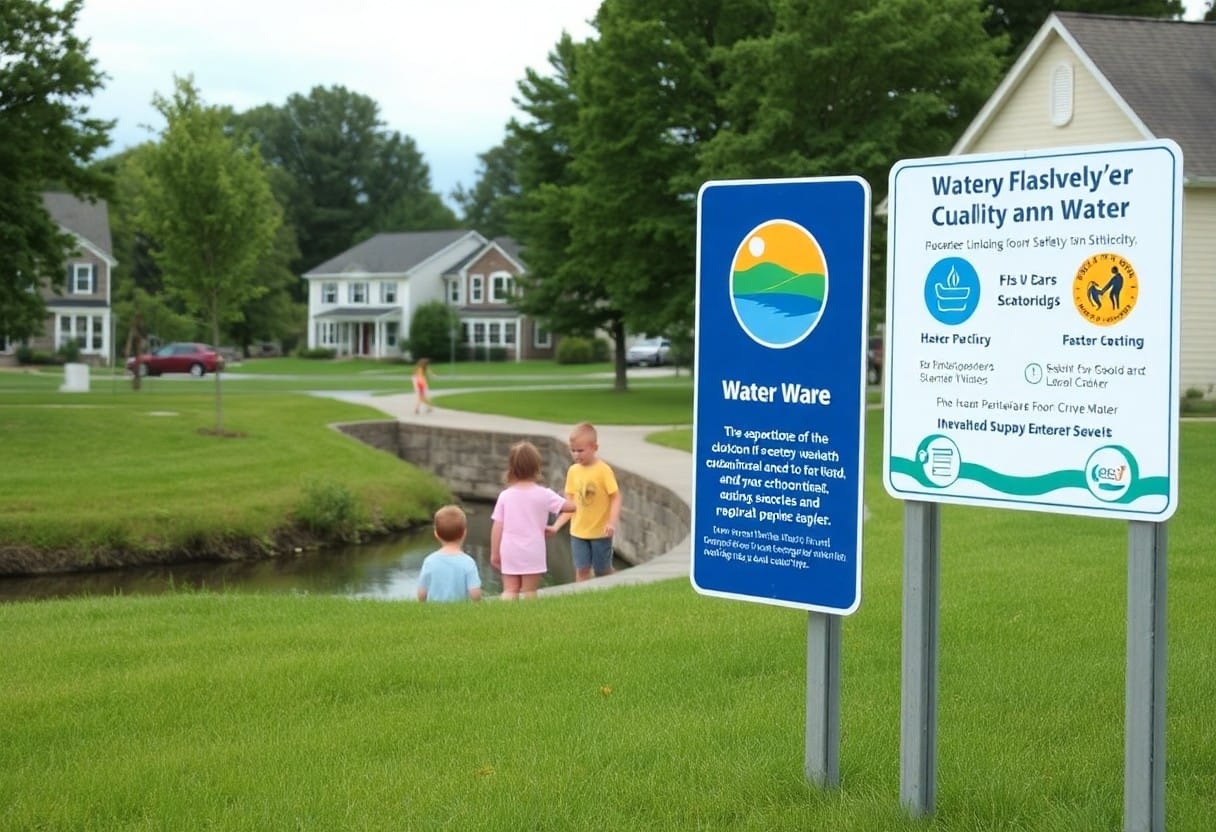Over the past few years, concerns surrounding PFAS (per- and polyfluoroalkyl substances) in drinking water have skyrocketed, leaving many families questioning their safety. While you may believe that low levels of these chemicals pose minimal risk, emerging research suggests otherwise. PFAS are linked to a range of health issues, including hormonal disruption and immune system effects. It’s crucial for you to understand the potential impacts on your family’s health and explore whether your drinking water is truly safe. Stay informed to protect what matters most—your loved ones.
Understanding PFAS
Your awareness of PFAS (per- and polyfluoroalkyl substances) is vital in understanding their impact on health and the environment. These widely used chemicals have been linked to adverse health outcomes and can persist in the environment for extended periods.
Definition and Types of PFAS
Your knowledge about PFAS starts with recognizing these synthetic chemicals that repel water and grease. They are often categorized into two main types:
| Type | Description |
| PFOS | A type of PFAS used in firefighting foams and stain-repellent products. |
| PFOA | Previously used in non-stick cookware and water-resistant fabrics. |
| GenX | A newer alternative to PFOA and PFOS, used in manufacturing. |
| PFNA | Linked to various industrial applications and coatings. |
Perceiving the persistence and bioaccumulation of these substances in the environment is vital for your family’s health considerations.
Sources of PFAS Contamination
Against the backdrop of widespread use, PFAS can infiltrate water supplies through various paths. Common sources include industrial effluents, agricultural runoff, and consumer products that leach chemicals into systems.
For instance, manufacturing plants and military bases are significant contributors due to the use of firefighting foams containing PFAS. Household products, such as water-repellant fabrics and non-stick cookware, can also leach these chemicals into the environment. Urban runoff and landfill leachate further exacerbate contamination, leading to widespread drinking water issues. Addressing these sources is integral to safeguarding public health and ensuring clean water for you and your family.
Health Effects of PFAS
Some studies indicate that exposure to PFAS can lead to a variety of adverse health effects, including impacts on your immune system, liver function, and even increased risk of certain cancers. As these chemicals accumulate in your body over time, it’s necessary to be aware of how they can affect your family’s well-being.
Short-term Exposure Risks
About short-term exposure to PFAS may cause temporary health issues such as skin irritation and respiratory difficulties. Pregnant women, nursing mothers, and children are particularly vulnerable, experiencing more pronounced effects from even brief encounters with contaminated water sources.
Long-term Health Implications
Around the world, long-term exposure to PFAS has been linked to serious health conditions, including kidney and testicular cancers, thyroid disease, and developmental issues in children. You should be vigilant about monitoring your drinking water quality, as even low-level contamination can contribute to these significant health risks over time.
Further research continues to uncover just how pervasive and dangerous long-term exposure to PFAS can be. Studies show that these chemicals can disrupt hormonal balance and impair immune system functioning, making you more susceptible to infections. Moreover, the potential for adverse developmental effects in growing children raises alarming concerns for families. It’s vital to stay informed and proactive, as even minimal exposure can have long-lasting implications on your health and that of your loved ones.
Current Standards for PFAS in Drinking Water
You should be aware that the standards for PFAS in drinking water are evolving as research continues to reveal their potential health risks. Various agencies actively work to establish guidelines and enforce limits on PFAS levels to protect public health. It’s necessary for you to understand these standards to better safeguard your family’s drinking water.
Regulatory Guidelines
Behind the scenes, regulatory agencies like the Environmental Protection Agency (EPA) and the Food and Drug Administration (FDA) set guidelines to monitor PFAS levels in drinking water. These agencies utilize scientific research to inform their recommendations, aimed at minimizing exposure to harmful substances. It’s important for you to stay informed about these guidelines to ensure safe drinking water for your family.
Comparison of State and Federal Limits
With varying regulations across different jurisdictions, PFAS limits can differ significantly between states and federal guidelines. Here’s a snapshot of some of the standards currently in place:
| Entity | Limit (ppt) |
|---|---|
| EPA (Proposed) | 4 |
| California | 5.1 |
| New Jersey | 13 |
| New York | 10 |
Limits can fluctuate due to updates in scientific understanding and public health priorities. State regulations may be more stringent than federal standards, reflecting local concerns about PFAS contamination. This means that you may not only need to consider federal guidelines but also any applicable state regulations when evaluating your drinking water safety.
| State | Summary of Limits |
|---|---|
| California | Strict limits set for specific PFAS compounds. |
| New Jersey | Proactive measures for stricter drinking water standards. |
Limits established by states can be much lower than federal recommendations, indicating that some states prioritize drinking water safety more than others. For you, this means it’s vital to know both state and federal guidelines to ensure your water is free from harmful levels of PFAS.
Assessing Safety: What Does “Low Levels” Mean?
Once again, understanding what “low levels” of PFAS in drinking water means is necessary for your family’s health. Regulatory agencies often set limits based on current scientific data, but these thresholds can vary significantly. What may be considered safe for one community might not be the same for another. Additionally, the long-term effects of chronic exposure to even low levels of PFAS are still being studied, leaving lingering questions about safety for you and your loved ones.
Toxicological Perspectives
Any exposure to PFAS, even at minimal levels, raises concerns regarding potential health impacts. Toxicological data suggest that PFAS can accumulate in your body over time, leading to adverse effects such as increased cholesterol levels, liver damage, and potential reproductive issues. While studies largely focus on high concentrations, the effects of prolonged low-level exposure remain a pressing question that warrants ongoing research.
Vulnerable Populations
About 1 in 4 individuals may be more at risk from PFAS exposure due to factors like age, pregnancy, or existing health conditions. Infants, young children, and pregnant women are particularly susceptible, as they may experience more severe effects from toxins. Additionally, individuals with compromised immune systems could face heightened risks related to low-level exposure.
And as you consider your family’s safety, it’s important to understand that vulnerable populations like children and pregnant women may experience more severe health consequences from PFAS, even at low concentrations in drinking water. Infants and young children are still developing and may be less able to process contaminants, while pregnant women may expose their developing fetus to these harmful chemicals. Additionally, individuals with weakened immune systems have less ability to fend off health repercussions from low-level exposure. Ensuring safe drinking water is even more vital for these groups to protect against potential developmental and health challenges.

Testing for PFAS in Your Drinking Water
To ensure the safety of your drinking water, performing a PFAS test can help identify any hazardous levels of these chemicals. Testing can provide you with critical information about potential contamination in your water supply, giving you peace of mind or prompting necessary actions to protect your family.
How to Get Your Water Tested
Beside purchasing a home testing kit, you can also contact local water quality testing laboratories for professional analysis. Many states and municipalities offer tests specifically for PFAS, so check with local health departments or environmental agencies for available programs and resources.
Interpreting Test Results
After receiving your water test results, it’s necessary to understand their implications regarding PFAS levels. Knowing whether the detected concentrations exceed safety guidelines can guide your family’s next steps in ensuring safe drinking water.
Interpreting your test results is vital for evaluating the safety of your drinking water. If PFAS levels are below guideline limits, you may conclude your water is relatively safe. However, if results indicate high levels of PFAS, this poses potential health risks to your family, such as hormonal disruption and developmental effects. Take immediate action to address unsafe levels, such as using a water filtration system or seeking alternatives. Understanding your results empowers you to make informed decisions about your family’s health and safety.
Mitigation Strategies for PFAS Contamination
After understanding the risks associated with PFAS contamination, it’s crucial to explore effective mitigation strategies to protect your family. These strategies can significantly reduce exposure and ensure safe drinking water. From improved filtration technologies to advocating for policy changes, you have various options to create a healthier environment for yourself and your loved ones.
Filtration Systems
Beside choosing a safe source of drinking water, investing in a filtration system can be an effective way to reduce PFAS levels. Look for filters certified to remove these chemicals, such as reverse osmosis or designed activated carbon systems. By installing one of these systems in your home, you can drastically lower your family’s exposure to harmful substances.
Policy and Advocacy Efforts
Between individual actions, advocating for stronger regulations on PFAS can lead to broader changes that benefit your community and improve public health. Joining local organizations or pushing for governmental policies can play a significant role in addressing PFAS contamination.
But engaging in policy and advocacy efforts is just as vital as individual solutions. By staying informed and actively participating, you can help push for stricter regulations on PFAS pollution and demand accountability from corporations and regulatory agencies. Your voice matters in this fight; whether through petitions, attending town hall meetings, or supporting legislation aimed at protecting your drinking water, you can help effect change for a safer future.
Summing up
Hence, when assessing the safety of low levels of PFAS in your drinking water, it’s imperative to consider the potential health risks they pose to you and your family. While some might argue that minimal exposure isn’t harmful, emerging research indicates that even trace amounts can lead to adverse health effects over time. It’s important to stay informed about local water quality and advocate for stricter regulations to protect your household. Ultimately, ensuring clean, safe drinking water should be a priority for your family’s well-being.





















